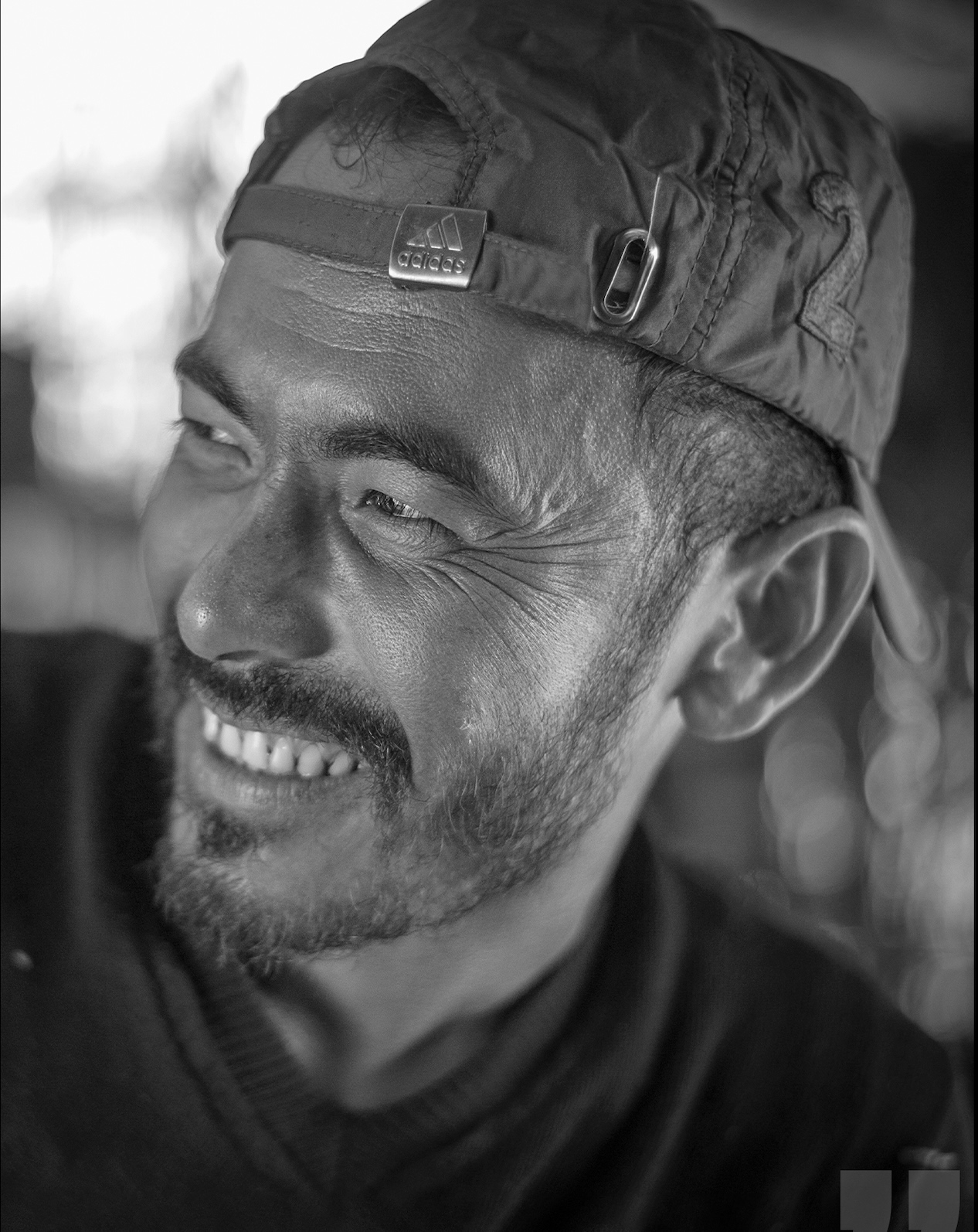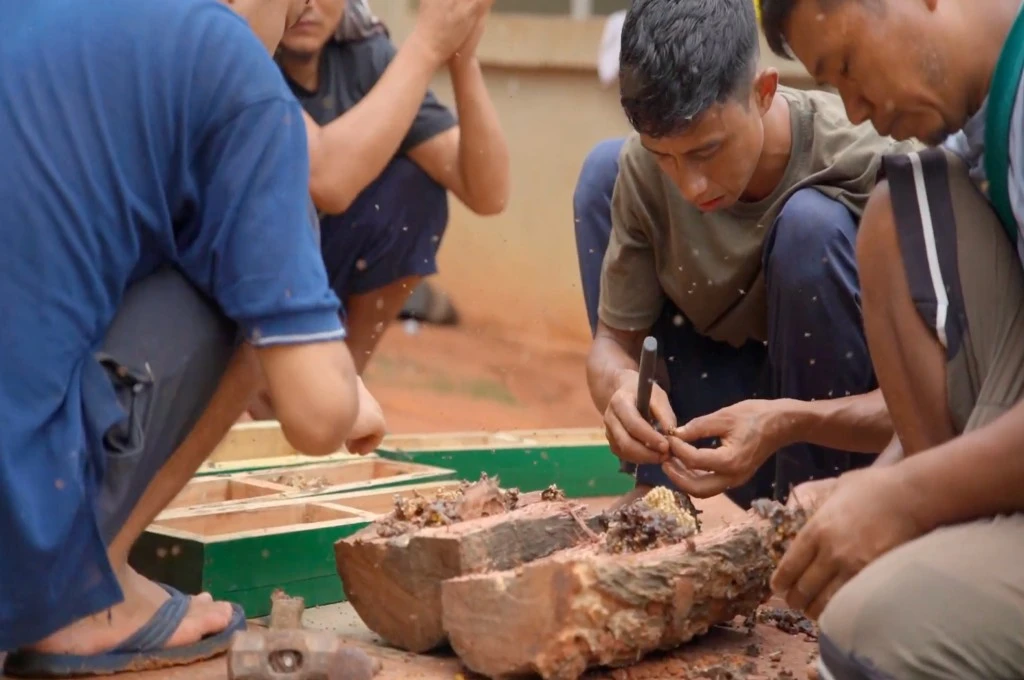Scattered across the banks and islands around the three rivers of Siang, Dibang, and Brahmaputra are small structures made of bamboo, tarpaulin, and grass. These structures, called khutis, provide temporary shelter to the semi-nomadic herders who voyage through the islands in search of better grasslands for their cattle. I grew up in a khuti with my grandfather who belongs to the indigenous Kirat Rai community from Nepal. We have been herders for generations. But over the years, a number of factors have changed how we herd.

The decline of the khutis
For decades, the khutis acted as small village hamlets on sandbanks and islands in Assam. Whole families, including men and women, used to live as intergenerational herders. People from Nepal as well as other parts of Assam and the surrounding regions migrated to Upper Assam to settle here for several seasons and graze their buffaloes. We had a specific economic system, which included individual herders as well as mahajansandmahajanis, who owned many khutis and employed herders to take care of their livestock. Kanchi Mahajani, whose family lived in Nepal, was one such herder in Assam’s Sonitpur district. She migrated on foot and by boat with her herds upriver to these islands and settled here. When I was young, her khuti was next to ours. She employed herders to work there and lived her entire life on these islands with her buffaloes. She died of old age in the khuti, and her children chose to sell off her buffaloes and return to Nepal.
Now, it is increasingly uncommon to see women out on the khuti. Frequent flooding of riverine islands, which has grown rather monumentally as a consequence of the changing climate in recent years, has made living in the khutis quite an arduous task. In 1998, many khutis were washed away during what is colloquially known as the China flood (owing to its origin in the Siang river of China). Since then, families avoid migrating together to the khutis and most members stay back in the village, with only the male member, who are in charge of herding, leaves. In 2019, before the onset of the COVID-19 pandemic, the Dibang river area had approximately 10 khutisrun by several families. Six years on, this number has plummeted to two.
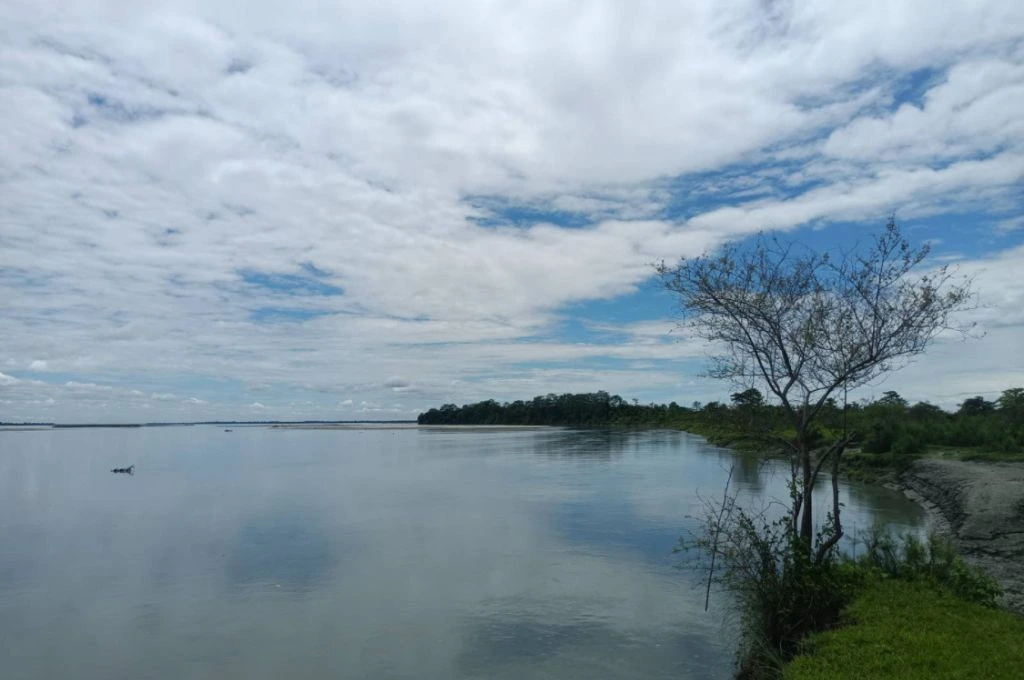
To make matters worse, riverbank erosion has led to a drastic decline in the grass cover on these islands. As grass decreases, the soil loosens up and risks further erosion, perpetuating the cycle. This erosion has been primarily caused by the rapid shifts in the course of our rivers. They constantly find different channels and settle into them. This means that there isn’t enough time for the upper layers to settle down as land mass. And without vegetation, the soil erodes further. As the soil erodes on one side, the other side gains new land. It takes a long time—at least four to five years—for this land to grow grass. And sometimes, even when the land stabilises and grows grass, the forest slowly starts taking over. The silt thrown up by the river is fertile ground for grasslands to grow. With time, these grasslands decompose and turn the silt into soil, which helps in the growth of forests. The debris thrown up by the river eventually decomposes into the silt, and gradually the silt and sand turn into soil.
The rise of human–wildlife conflict
In the last few years, there has been a surge in conflict between the herders and the elephants. We have always co-existed in harmony with wildlife found in the jungles on the sandbanks and islands. Usually, we know about the corridors that elephants take to migrate and we are careful about building our huts away from the main corridors. However, in the last few years, we increasingly find ourselves in the path of elephant herds. A lot of them now cross over to the mainland looking for grain in the farmlands across the river. The river is becoming shallower, so it is easier for them to cross it to get to the farmlands. Their corridors are thus changing. They come to our huts too looking for food.
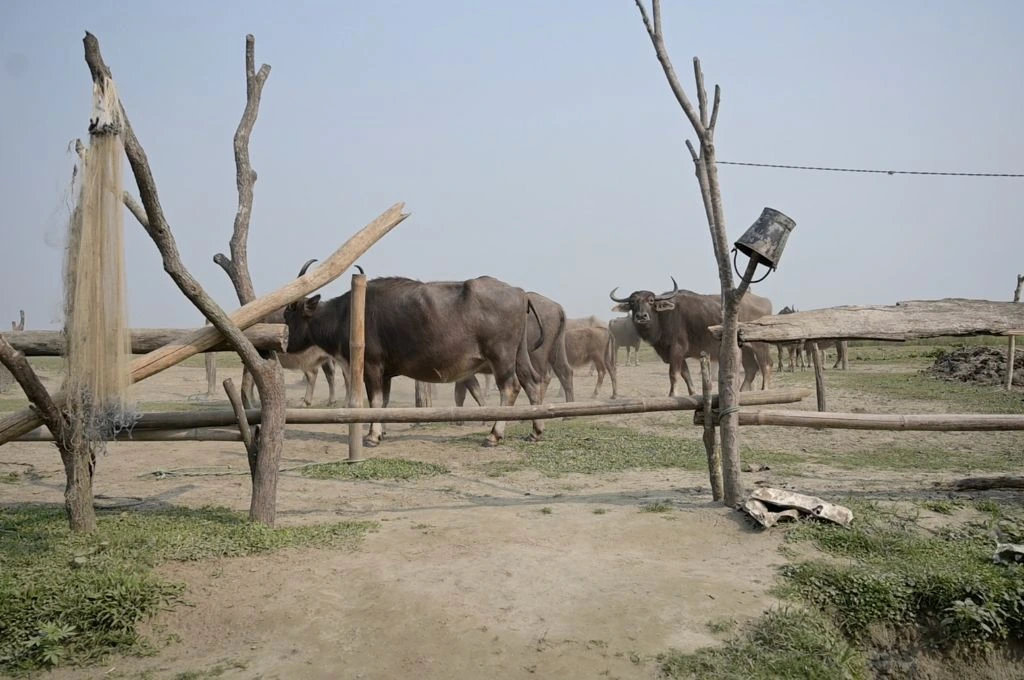
The buffaloes protect us and our khutis from the elephants. They are big animals and the elephants don’t bother them. We have always built the corrals that we tie the buffaloes to on the outermost perimeter of our khuti. After that we dig trenches around, and in the centre we build our khuti and the stables for calves for protection from wildlife. So the elephants have to cross the corrals and the trenches before they can reach our khutis. We light a fire outside to scare them away. Sometimes, if we know herds are passing through, we even stay awake all night. If a lone elephant turns up, we hide in the stables made for the calves of the buffaloes. The elephant doesn’t attack the stables, so that is the safest place in such a scenario.
People are looking for a different livelihood
Earlier, khutis would provide dairy to much of Assam. For most of us, having a khuti or being a mahajan or mahajani meant being able to save up enough money to buy land and settle down with our families once we retired from herding. An average khuti would have a minimum of 100 buffaloes. Some of us had herds as large as 1,000 buffaloes. Now, the economy has changed and, with inflation, the earnings from a khuti are meagre. Additionally, the yield and quality of milk have diminished owing to changes in the quality of grass and decrease in grazing land.
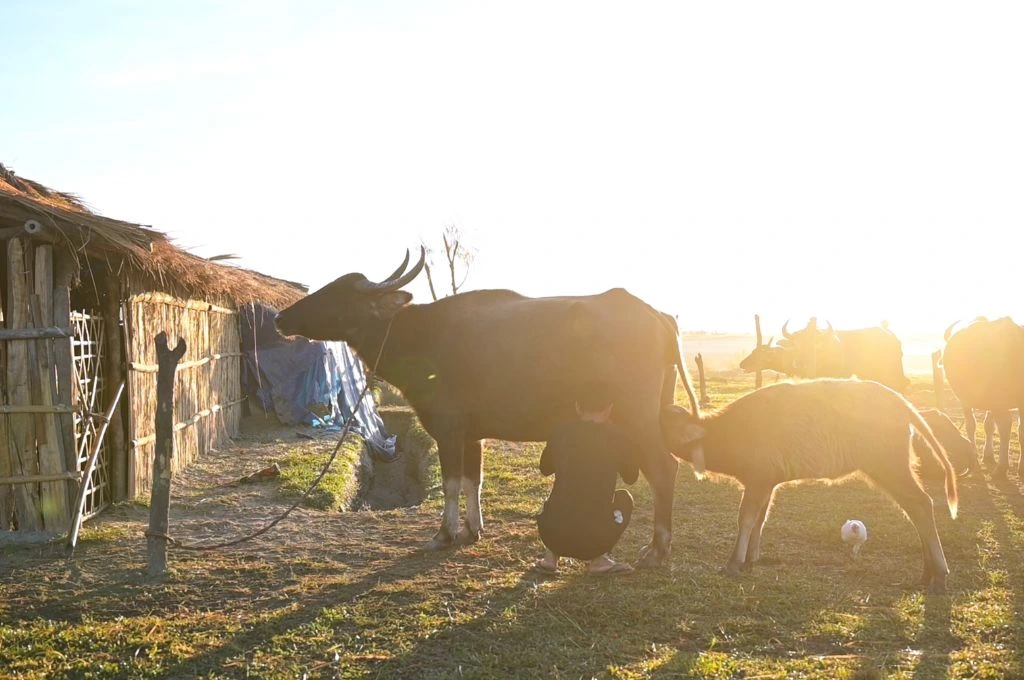
The younger generation no longer wants to sit in a jungle rearing buffaloes and cows.
As grazing grounds decrease, people are left with no choice but to go on longer routes in search of better grasslands. Many, instead, choose to sell their livestock and engage in agriculture-related livelihoods.
Several herders sell their herds to buy land; others rent out shops to make a living. Some buy cows in their own villages and sell milk. Owing to our semi-nomadic nature, most of us have families in different parts of Assam and return home to look for jobs. Daily wage labour is another alternative.
Life at the khuti is no longer the same.
—


